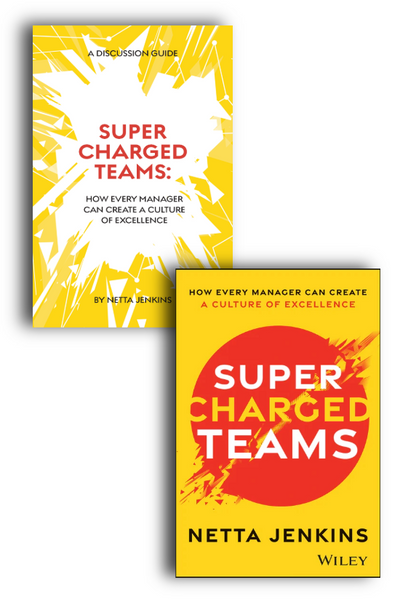LizAF: An Expert’s Rules for Fundraising Success
If you think about the chain of events that has to happen to get someone to give you some money for a piece of your company, it’s nuts that we even try to do it.
You have to figure out who to call and then you have to figure out how to get in touch with them and then you have to figure out how to get their attention and then you somehow need to say enough of the right words in a cogent-enough manner (impossible at this stage) such that they agree to a second and third call, and then you need to convince the rest of their team of everything you already told them and then you need to go through this thing called negotiating, with words you’ve never seen in your life, paying lawyers more money than your grandparents probably made in a year, and then you have to figure out how to get this round to close and then you stare at the money in the bank account and have to figure out exactly what the hell you do with it because everything in the past three months you made up anyway just to get the money.
That requires relationships, hustling, and audacity. Fear and anxiety have no place here. This is what is required of a founder to successfully fundraise. No wonder it’s daunting.
For most second-time founders or beyond, getting in front of investors should be fairly simple, so I’m going to focus solely on the first company experience.
Here are some guidelines that move a fundraise more quickly and eliminate objections. I call them Liz’s Absolutes of Fundraising. You may call them LizAF:
Rule #1: You are more powerful together as co-founders than with a hero CEO.
Tag team each call. Someone pitches, someone observes and takes notes and chimes in when something isn’t hitting. The story is a dance that the two or three of you create. I have never had stronger raises than when I did it with co-founders next to me. After each call, analyze what went well, what didn’t, what resonated, what didn’t. Edit and pitch again. Every call is an opportunity to test new and improved messaging. Even if you go out on a limb and it falls flat, who cares? You have another call in twenty minutes.
Rule #2: Fundraising is your new full-time job.
You no longer have another job. If you’re doing it right, there are six to eight calls each day.
My thirty-ninth birthday fell in the middle of a raise. That day, my co-founder and I had already pitched eight firms and I had a dinner to go to that night hosted by a fund still in the mix. I sat outside Hudson Yards crying because all I wanted was to be home alone with a piece of birthday cake, not talking. That should be you: exhausted and on the verge of tears because you are pushing that hard to get a term sheet.
Done right, this can be done in a month, possibly less. One round I did was twenty-eight days, from first pitch to term sheet signature. Another: four days flat, and twenty-three hours from first email to the term sheet we ended up signing. These are outstanding numbers and yet I think it is achievable for anyone to complete a solid raise in a month.
Rule #3: Never talk to associates.
That’s right, you heard me, and yes, I disagree with Jerry. You find a way to break down the door to a partner or you don’t pitch the firm. Associates have no power. They can only say no, never yes. Only partners can say yes, and most often they have to get other partners to agree with them. Why would you talk to someone who is empowered to only reject you?
You wouldn’t. And if you can’t hustle well enough to get directly to a partner, that should say something to you about your sales ability. You can do better.
Find a way to tell the story you want or don’t tell that story at all.
Of course you’ll say to me, “But, Liz, the associates are blocking me.” Okay then, have them bring a partner to a meeting. While associates exist to help the firm separate the wheat from the chaff and help partners get educated on your space, your job as a founder is to give your company the best possible chance of getting an investment. You can’t do that with associates. Why would you try to convince someone to give you money who can only say no?
I will add that it can be hard to distinguish associates from partners at firms where everyone is a partner. Simply reverse engineer what companies they’ve actually been on the board of (Director, not Observer) by reading press releases or by looking at when they graduated business school, and you’ll easily figure out who is whom.
Rule #4: Never send a deck out over email.
That’s right, this is in direct contrast to my co-author. A demo video is great, but nothing more than three sentences on your business in writing. It’s the same reason as Rule #3. Why give someone the chance to say no?
You, the founder, are a master storyteller. You can only control the narrative live. If someone won’t spend fifteen minutes on the phone with you to hear your story, do you really want them on your cap table? I didn’t think so. Nobody is too good for fifteen minutes.
Rule #5: Always pitch with a deck.
You may be surprised that I advocate for one. I don’t with most software sales, but I do with VCs. The deck, if crafted properly, helps you control the conversation.
Against the wishes of one of my co-founders, I once insisted we fundraise without one. I thought we could “just have a conversation” about the business. Two meandering calls later that neither investor remembered, I said yes to the deck. I was wrong and I’ll never do it another way again.
Rule #6: Never do anything without being on video (or in person).
VCs like to take phone calls in their car. Don’t let them. Politely reschedule the meeting, even if it means rescheduling after they’ve joined the call from their cell. They don’t know your business, you don’t have their undivided attention, the signal will drop, you can’t read their faces. There are a billion reasons why this puts you at a disadvantage. Don’t let it.
My co-founders and I figured out this rule during our last Series A raise. After a few calls in cars, we agreed that we would gently ask them to reschedule. The first time we put this one to the test was with an ex-partner at a Tier 1 firm. This partner was a woman—and I call this out because I, too, am a woman, and often women are purposefully mean to other women. She joined the call on her cell while driving her car. We politely asked her to reschedule. She instead pulled her car over to the side of the road and got on Zoom, just to make a point. We had a rejection email something like an hour later.
A few years later, she emailed again in pursuit of the company’s Series B but her email went unanswered. Like all investors, she was as short on memory as founders are long.
Insomuch as our industry believes it’s woke, it’s not. Women are treated poorly, often by other women. The rich male investor is just as sleazy as you read about in the news, sometimes more so because they have no checks on their power. When in doubt, simply look the part you’re playing.
For example, if you’re technical, dress like a stereotypical developer. Early on I made the mistake of wearing a suit and heels to a pitch and the VC probably still doesn’t believe I was the company’s backend developer.
In any case, looking dowdy is the best way to ensure the focus is on the business and not you.
For women, and especially women that are attractive, I’d recommend knockaround clothes. Leggings, Doc Martens, sweatshirts, loose-fitting jeans, glasses instead of contacts. No fun colored hair. The goal is to blend in for male investors, and for female ones, you need to appear as nonthreatening as possible. For men, wear jeans and sneakers and a T-shirt, and I don’t mean $500 kicks. You have to look like an engineer, not a Columbia MBA.
All co-founders need to be looked at, absorbed, and dismissed visually within the first five seconds. My co-author will most likely disagree with this entire paragraph, largely on the merits as it relates to presenting an idea that will make people money. I hold a more cynical view based on personal experience.
Rule #8: Investor data requests are dumb.
The term is data room, and in this case I’m referring to information you use in the fundraise to convince investors to say yes and not what is required as part of diligence before closing.
These data rooms exist simply because this is an investor wanting you to do their diligence for them. They’ll each want revenue numbers a specific way, growth numbers another way, customers another way, and so on. You will kill yourself organizing information in a bespoke fashion for every investor. So don’t.
Leverage the associate. This is their job, after all: to crunch things and create a point of view called an investment memo. Make them do the work. Create a Dropbox folder with at most a few items in it. And make sure that the information is presented in the way you want. Investors ask you to break revenue down by logo? Do it, but don’t send them the logos. Anonymize it. Logos are your secret and investors will call them. ARR doesn’t look good annualized? Make it quarterly and provide them the sum instead of line item detail.
Find a way to tell the story you want or don’t tell that story at all. If data doesn’t serve you, don’t provide it. Put information into PDFs, not spreadsheets. Invest time in getting graphs just right; it’s a talent and when you see a good graph, the conclusion hits you over the head and you move on. Investors are sheep. Shepherd them.
Rule #9: Always answer the question you want to answer.
I’ve said it before and I’ll say it again. I live and die by this rule, even to the point where I will call out objections before they’re raised because if I do that, I control the narrative.
During one fundraise, we had a weird data point that demanded explanation. We didn’t have a good answer, but instead of hiding it, we decided to call it out. So during the pitch, when we hit the “up and to the right” revenue graph, we said, “You know? You see that spike there? That was our first enterprise deal. And you’re probably thinking that we should have raised then. You’re right. We should have. But we’re here now and so let me share how much we’ve learned about the enterprise since and how that’s now a part of our sales cycle blah blah blah.”
By calling out the objection and reframing it, you own the narrative. This is also a prime example of why practice runs with investors you don’t care about are so critical. They’ll ask all the same questions later stage folks will. The prep is worth its weight in gold.
In practice, this is not a skill that most of us founders have at the beginning nor one that comes naturally. Investors are very, very good at thinking before they speak, so good that in one universe I’d argue their full-time job is masking what they’re really saying, which makes sense. This is their job.
Founders, in contrast, are less so. We are typically young, hungry, and brash. Or we’re maladjusted engineers who LARP on the weekends for fun. In any case, we’re human and untrained at that. If investors think too much and founders not enough (at least until they’re more long-in-the-tooth), you can see what kind of odds that creates, especially early on.
The only thing I can say is that, knowing this, your job is, again, to control the narrative as much as possible. Dig, perceive, try to figure out what the question under the question is, and only then answer. Answer a question with a question until you’ve figured it out. You can’t do your job unless you understand, much like a diplomat.
Rule #10: Pre-term sheet diligence (technical or otherwise) can drag you down.
Don’t let it. We’re talking max two pitches, one call with your CTO, a few customer references, and then a partner meeting. If it’s anything more than that, something is wrong and the investor is stuck on a point. Identify that point or move on.
Rule #11: There is no such thing as “getting investor feedback.”
No such thing. If you are talking to an investor, you are raising. I don’t care if it’s a fifteen minute coffee a year before the raise. You are raising.
If you insist on doing this, you must carefully map out what you can and cannot say. Investors will insist that “we need to develop a relationship because we invest only in founders we truly know.” They will use clichés that sound great on coffee mugs. They are not saying it because they want to get to know you. They are saying it because they want to (wait for it) stay as close to a deal for as long as possible so that they can defer saying yes. The longer they wait to say yes, the more they have mitigated their risk. They are not your friends. They care about one thing and one thing only and that is their investment return.
There are very few investors that I would call friends.
Now, does it help that you can call eleven investors up the moment you decide to raise and say, “Yo, want the inside track on this round?” Sure! But you can get fifty more lined up right after that. Does it help that you have gotten to know people so you have a sense of their personality? Sure! But guess what? People change and investors are slick and they do not care about you. They care about your return. Why give them the chance to get close to you when it does really nothing to help you in the long run and everything to help them?
I’ll admit this advice has bitten me in the ass before. It’s made fundraising more difficult at times, and I’ve chosen bad or ineffectual investors because of it. I also have the same problem with investors whom I’ve known for a decade. Somewhere in the middle is most likely accurate, but remember: if you’re going to go out for coffee, you must invest time in architecting what you’re saying. They have long memories and zero hesitancy ignoring your emails if they don’t like what they hear over coffee.
Rule #12: Disqualify quickly.
Very quickly. Or get rejected quickly. Very quickly. I don’t care which way it is, but get the breakup over with so you can focus on the ones who matter. One of my favorite things to teach sales hires was to get the prospect off the phone as quickly as possible by disqualifying them. If the prospect really needs your software, they’ll come back. And if they’re not, they’ll say thanks but no thanks. The same holds true with VCs.
Remember, if a founder’s job is to cut through the bullshit and discover the real reason for a rejection or extra work (a skill that takes time to develop), then a VC’s job is to string you along for as long as possible to mitigate their risk of committing capital to a failing business. Unless you’re in a frothy market or you’ve built a transporter from Star Trek, nobody is going to tell you the truth. They’ll “stay in touch” or “check in” or “I’m traveling for the next two weeks but how about then” or they’ll ghost.
Humans do not like to be uncomfortable, and venture capitalists are no exception. To say no and give the real reason why requires being uncomfortable.
Think about the last time you broke up with someone. Did you actually say to them that you thought you could be okay with the fact that they washed cars for a living but really you just wanted to be taken out to a fancy meal without worrying if they’d be able to pay rent the next day? No. You didn’t. You said that you weren’t ready for something right now or that you thought they were incredible and asked if you could be friends. You did that because you didn’t want to hurt them, but what that really means is that you didn’t want to be uncomfortable.
Investors do that too. When they say they don’t believe in the market or that the valuation is too high or that they’re not sure the tech is defensible, know that all of that is bogus. You need to hear a sentence like, “We judge companies in three areas: team, go-to-market, and product. We think you and your co-founder are great and the product is built solidly. But we disagree with your approach in selling top-down to the Fortune 500 and think there’s a bigger opportunity in going to SMB first. Furthermore, you didn’t seem to be open to the idea of other approaches and you deserve an investor that agrees with your vision.” That’s a real rejection. You’ll never get it.
In summary: assume the investor consistently avoids sharing what they think, from first meeting to exit. It’s a truth in the world, like death and taxes. Find a way to get them to reject you or dump them yourselves.
Fundraising is just a sale.
And you are a salesperson. You may think you’re not, but you become one the moment you put on the founder mantle. Find the prospects, pitch them, get them to agree in principle to a deal, then get that in blood. You do that with smart thinking, storytelling, testing, and FOMO. Never blink. And as you’re doing that, you’re dialing for the information that could save your company, your life.
Go forth and conquer those pesky investors. Crush them.
Now read the Investor's Perspective: An Excerpt from Founder vs Investor











































